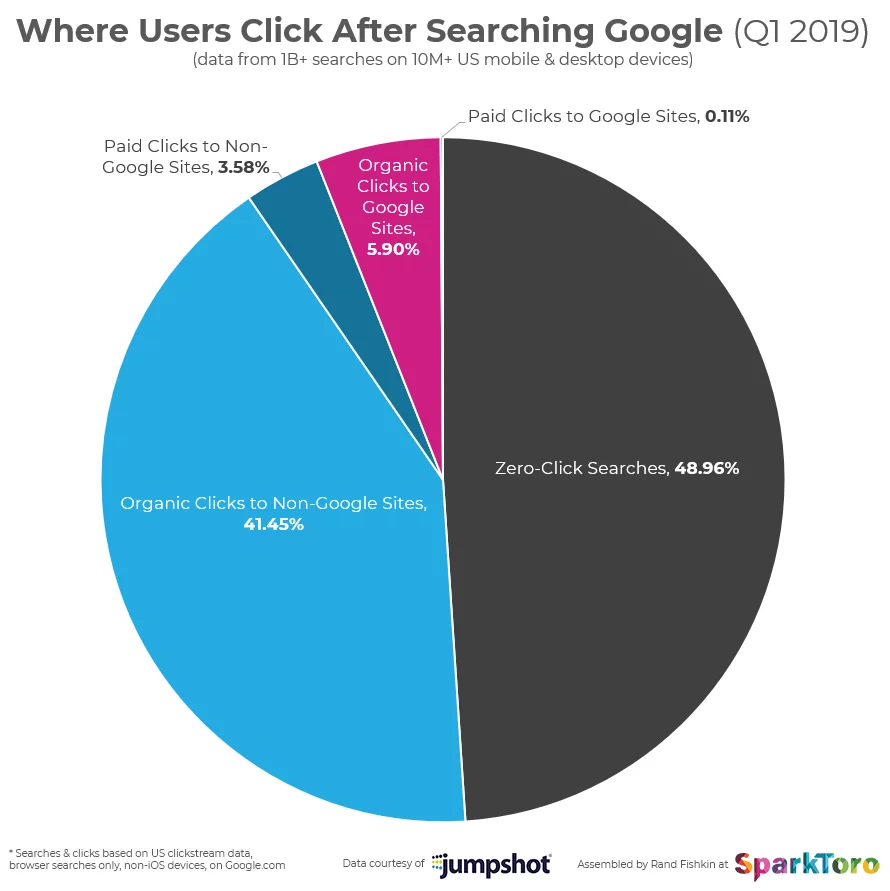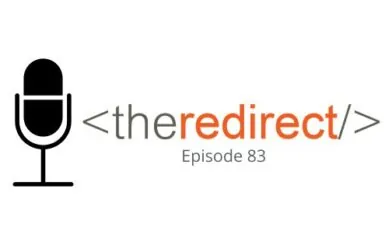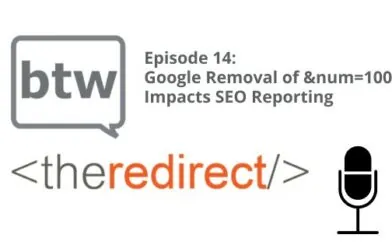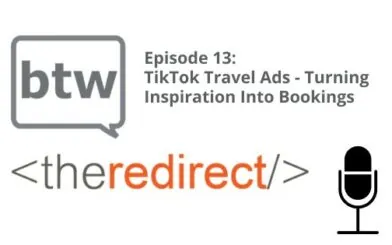Episode 71 of The Redirect Podcast, our special guest is none other than Rand Fishkin. Rand is no stranger to the SEO community as the founder of SEO software company Moz, accomplished author, and now his new company SparkToro. In this episode, Rand and Jason have a candid conversation regarding not only Google’s dominance as a search player and referrer of traffic to most websites, but their penchant for disruption and favoring their own properties over others to answer search queries.
Defining Zero-Click Searches
The idea for this episode and reasoning for reaching out to Rand to discuss, was the growth we have seen in the past few years of what can be described as “zero-click searches.” For those not familiar, zero-click searches are those where the user can perform a search and Google not only provides the answer to what it is they’re seeking, but also provides no incentive to click-through to the actual website generating the result.
Google Favoring Alphabet Properties
It’s been known for a long time that Google dominates search. Somewhere in the neighborhood of over 66% of traffic to many major websites (top 5,000) is being sent by Google.com. For those on the smaller scale, as Rand refers them as the “longtail of the web,” closer to 80% is probably reliant on this traffic. Following Google from past, present and looking into the future, they have shifted very much beyond just being a search engine and more toward being an answer engine.

Google as a Disruptor
Google is, and has been, on a consistent path of disruption. Disruption in the form of results delivered to the end-user. Most can say that for the user, this is in fact providing a better experience. Overall, a statement that can be agreed upon. We go to Google seeking answers to our questions. Solutions to our problems, etc. as we have trust in their results. Disruption for Google also comes in the form of shifts they can make that impact entire industries. From flights and hotels, to jobs, events and even publishing. As Rand pointed out, where the long-tail of the web is much more reliant on Google’s traffic, consider the major players who have been impacted by such disruptions.
Growth in Zero-Click Searches
Since January 2019, both SparkToro and JumpShot have been documenting some incremental growths of zero-click searches. Over time we see that organic impressions absolutely increase, but the click-through-rate from organic searches decreases. In our own research at BlackTruck, we have witnessed some brands seeing 150% growth in impressions to specific category pages year-over-year, only to see organic CTR diminish and traffic as a result drop 20% or more. The reality of the situation is that less than half of all Google searches result in a physical click (SparkToro).

Reporting in a Zero-Click Search World
Given the growth of zero-click searches, one can only expect this trend to continue, and as SEO’s we need to start talking about them more. Measurement of results, tying it back into ROI and showing value for these types of snippets and features is going to be imperative to your work. At the end of the day, if you’re an SEO at an agency or in-house – ask yourself where is the value and how do we report on it?
You certainly cannot rely on any one tool to do the job for you. Search Console, while great for some things, is very one-sided and your SEO strategy shouldn’t be based solely off of what Google is telling you. Moz reports on some features, as does SEMrush and Ahrefs, but again, not all of them. We’re big fans of our friends at Mobile Moxie and some of their newest tools aimed at uncovering details like Rich Results, Featured Snippets and Hosted Inclusions. The mentality has to change and it starts with the conversations we’re having with brands, clients and those who are making decisions.
SERP Features as Displayed by Moz

SERPerator via MobileMoxie
[Demo Mobile Moxie free for 30 days – Code: BLACKTRUCK]
Investing in Zero-Click Searches & On-SERP SEO
If you have made it this far and listened to the majority of the podcast, it’s clear that if a brand can be relevant for a zero-click search, it could be an opportunity to invest resources. Rand suggests starting with keyword research to make sure they align with your business goals, then aggregating them up together to understand what features appear for those searches that have the most volume. Keeping in mind we’ve migrated away from the original “10 blue links” found in Google. The example that Rand uses is featured video or video results coming up in the SERPs.
If what you see is YouTube videos dominating the SERPs, the conversation must shift away from “how do I get my organic result above the videos” to “how do I get 2 of the 3 videos to come from my channel?” This concept can transcend into other features you’re seeing as well. Similar to methods you should be using to evaluate the SERPs right now to determine if you can be relevant organically or need to invest in PPC. Enter On-SERP SEO with that question in mind to help determine if this is a space you should venture into.
Is SEO Dead?
No.
While this would normally be an end of discussion statement, it’s worth pointing out that SEO is not dead, but that the role of an SEO is changing and constantly evolving. Our industry as a whole has matured greatly. We have more tools than ever before. More knowledge than ever before, but the game continues to evolve. Algorithms change and you can choose to chase them or not. Also understand that changes in search are much more than algorithm updates, they come in the form of visual evolutions to the SERPs. We as SEO’s must adapt.
A big thank you to Rand Fishkin and his willingness to come on The Redirect Podcast, where we dig into search marketing news and openly share our findings with you.
If you’re interested in exploring more on the concepts of zero-click searches or have questions about your brand’s outlook in search, we’re here to help. Connect with us and lets start the conversation.




